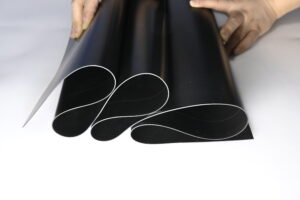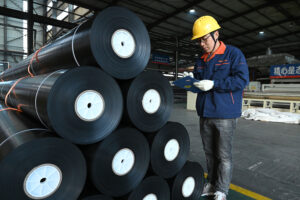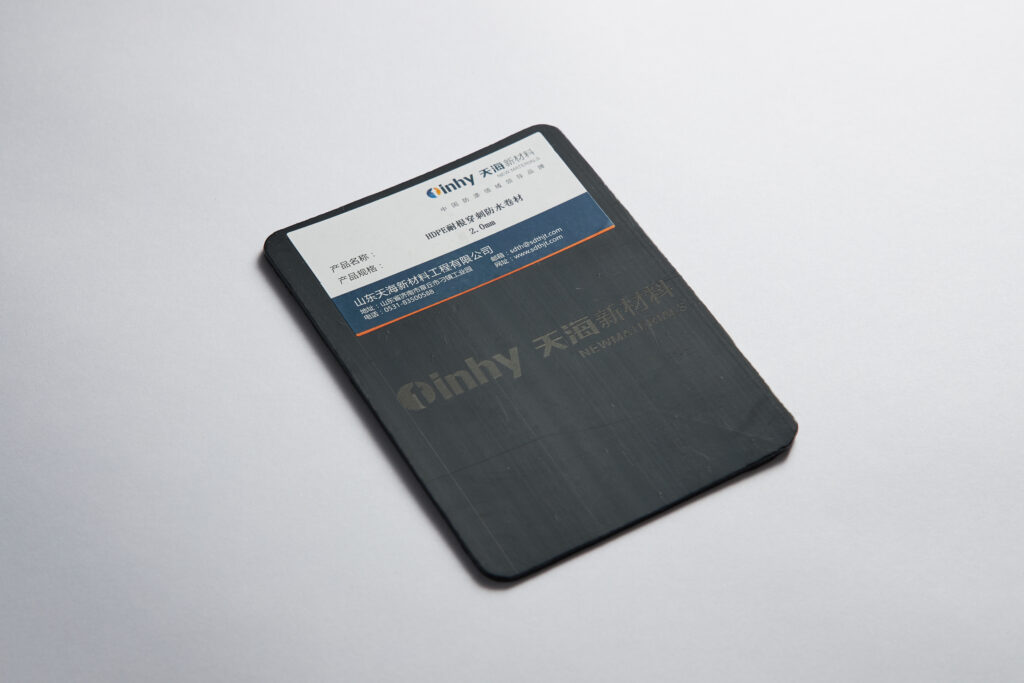Experimental Welding Requirements for HDPE Geomembrane
1) Trial welding must be carried out before welding work is carried out. The test welding should be carried out on the provided anti-seepage material sample, with a length of no less than 1 meter and a width of no less than 0.2 meters. The test welding should be carried out once a day when starting work in the morning and in the middle.
The sample is subjected to on-site tear testing using a tensile machine. The weld seam is not damaged by tearing, and the base material is torn open to ensure that the welding performance, welding method, welding temperature, and other external conditions are correct.
After obtaining the consent of the supervisor, a hot wedge welding machine with adjusted working conditions is used for formal welding one by one. During the trial welding process, the trial welding and its test results should be recorded.
2) Experimental welding was conducted on HDPE geomembrane samples to inspect the welding equipment.
3) Welding equipment and personnel can only proceed with production welding after successfully completing experimental welding.
4) Experimental welding should be carried out under the same film surface and environmental conditions as production welding, that is, the HDPE geomembrane film foundation and surrounding environment temperature are the same.
5) After the experimental welding is completed, cut three 2.5cm wide test blocks to test the tear strength and welding shear strength.

How to Weld Geomembranes
The connection welding between HDPE pipes and membranes should be carried out using a special process of “pipe through membrane”. Its application
The key points of the work are as follows: first, make a trumpet shaped pipe sleeve using PE film, with the small end diameter consistent with the diameter of the film penetrating pipe, and the large end diameter around 0.8 meters (specific size will be determined during installation) and divide it into 6-8 small pieces.
Then, insert the pipe sleeve into the pipe in the order of size from large to small, adjust the position of the pipe sleeve according to the actual situation on site, and use a hot air cylinder for temporary stabilization.
At this time, attention should be paid to avoiding any suspended parts of the pipe sleeve, Finally, weld the large and small ports of the casing onto the vertical wall membrane surface of the drainage connection well and the leachate collection pipe, and add a stainless steel hoop to the PE collection pipe.
Squeeze welding is only used for repairing (such as repairing, strengthening) and areas that cannot be reached by dual track welding equipment. Squeeze welding can provide a stable temperature of 250 ℃.
During welding, the HDPE geomembrane welding rod is heated to melt, and then squeezed to the connection of the high-density polyethylene (HDPE) film to be welded. The welding rod and the high-density polyethylene (HDPE) film to be welded are fused together to achieve a sealed effect.
The raw materials of the welding rod and high-density polyethylene (HDPE) film are the same, ensuring material compatibility and weld strength.

Precautions for Geomembrane Welding
Use a roughening machine to roughen the film surface within a width range of 30mm to 40mm at the weld seam, thoroughly cleaning it to form a rough surface. Increase its contact area, but its depth should not exceed 10% of the film thickness.
When roughening, it should be done gently to minimize damage to the film surface. For films with a thickness equal to or greater than 2.0mm, a 45 ° groove should be made.
Use a hot air duct to bond the upper and lower HDPE geomembrane films, and the film surface at the joint should be flat and moderately tight.
Welding personnel should closely monitor the condition of the weld seam and adjust the welding speed in a timely manner to ensure welding quality.
Contact Us
[wpforms id=”40″]


